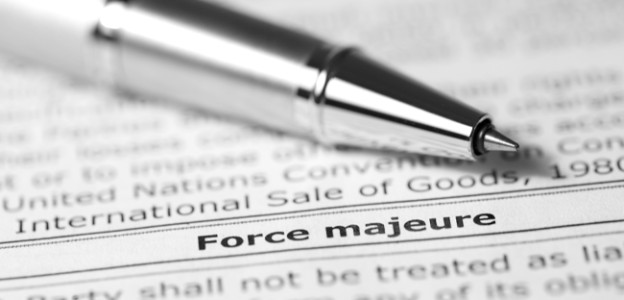02 September 2021
Covid-19 : Rent Relief Deals Under Commercial Leases
Authors

What issues should landlords and tenants consider?
Following the Alert Level 4 lockdown and the resulting disruption which will be caused by the effects of the lockdown and COVID-19, tenants will be dealing with cash flow and profitability issues.
A lease may or may not have an abatement (rent reduction) clause to address restricted access to the leased premises. In any event, tenants will need to plan for beyond the period that any abatement (rent reduction) clause applies.
Where an abatement (rent reduction) clause does not apply to any particular time (whether during or after the lockdown), a tenant suffering cash flow issues, or anticipating cash flow and profitability issues, will likely want to try and reach a deal with its landlord as to rent relief.
Assuming a tenant wants to try to reach a deal with the landlord to help the tenant’s business: What issues should both the tenant and the landlord consider to reach a deal on rent relief?
The following should be considered:
General position of the parties
Landlords will want to keep good tenants in place and operating for the long term. On that basis, a landlord may be willing to negotiate a deal for rent relief with its tenant.
Tenants need to keep in mind that rent relief is not guaranteed and a landlord does not have to reach any deal with a tenant (keep in mind that when we refer to rent relief, this is over and above any rent reduction which is already provided in the lease under any abatement (rent reduction) clause).
Tenants need to approach this with the understanding that the landlord is operating a business as well. The outgoings paid by the tenant under the lease cover some of the landlord’s holding costs of the property. The rent paid by the tenant is the landlord’s income. A landlord may have mortgage repayments to maintain for the property from that income.
Tenants need to be reasonable in any approach to the landlord. Landlords do not have an insurance response to any reduction in lease payments, so rent relief directly impacts the landlord as well.
Tenants should approach the landlord with information on its proposed cash flow and business continuity plan, taking into account disruption from COVID-19, to support its approach for rent relief. This will help the landlord to understand the tenant’s business better and how rent relief can help the tenant occupy the premises successfully longer term.
Options for relief
There are essentially two options for rent relief. First, deferring lease payments to a later date. Second, reduction of lease payments. The two options can apply together or separately in respect of any given month.
You need to be specific as to which lease payments are subject to the relief. These can include rent, outgoings/operating expenses and marketing fund contribution (where applicable). This is important due to the argument that a reference to “rent” can include all lease payments.
You need to identify the type of relief applying to each type of lease payment, and the relevant month(s) it applies to. For example, a deal may grant an immediate reduction in rent for a month and then defer the next two monthly rent payments.
Deferring lease payments
If deferring payments is agreed to, then you need to identify when the deferred payment is due. For example, the deferred payment can be split into equal monthly instalments with a start date and an end date for those monthly payments. Any balance would be payable at the end of the lease or an earlier assignment of the lease by the tenant.
You need to be specific as to which lease payments are deferred. These can include rent, outgoings/operating expenses and marketing fund contribution (where applicable). This is important due to the argument that a reference to “rent” can include all lease payments.
Conditions
A deal should be conditional on the tenant observing the lease. This is a driver for the tenant paying its future lease payments and meeting its other lease obligations.
A deal should be conditional on the tenant remaining solvent during the rest of the lease term. This is to ensure that, in the case of the tenant being insolvent, the landlord retains a higher amount of unsecured debt against the tenant than it would otherwise have with the rent relief applying. This gives the landlord a chance of receiving more from a liquidation of the tenant as an unsecured creditor, than it would otherwise receive.
Rent review
The rent relief should be recorded as being disregarded for the purposes of any future rent review under the lease. This will ensure that the rent relief does not affect the rent payable from any rent review date, including reducing the amount of any ratchet amount on rent review.
Additional benefits to the landlord
There should be flexibility for give and take between the parties. The landlord may negotiate additional benefits in return for rent relief. An example is for rent relief to be conditional on either the tenant agreeing to extend the term of the lease or exercising a right of renewal.
The additional benefit of a longer lease term for a landlord (via an extension or renewal) can be substantial, particularly if it occurs across a number of tenancies within a multi-tenanted property. For a multi-tenanted property, longer lease terms result in a higher weighted average lease term (WALT) applying to the property. The WALT provides a measure of the average term over which existing leases of the property will expire. It is a metric used in relation to valuation of a property. The higher the WALT figure, the more attractive the property will be for lenders and investors.
If an extension or renewal is to be agreed, it is important that any personal guarantee or bank guarantee requirement in the lease is also addressed to ensure it applies during the extended or renewed term.
In the retail context, the landlord may also wish to negotiate an additional benefit that, in exchange for rent relief, a future percentage rent may be payable to the landlord based on the tenant’s gross sales during a financial period, if those gross sales bounce back after lockdown to reach a certain target. This will involve an examination of the tenant’s previous trading history and forecasts for trading from the premises.
Trading hours obligations
If the lease provides for mandatory trading hours (this is common in shopping centre leases, for example) then consider whether any deal on rent relief includes a relaxing of that trading obligation. This would also address any liquidated damages that the lease provides for, in the case of closure in breach of mandatory trading hours.
Timing
Depending on the actual extent of the disruption to a tenant’s business resulting from COVID-19, the parties may need to revisit rent relief on a rolling basis over a number of months. For example, the parties could initially agree on rent relief for a two month period and then (without binding the landlord to do so) look at the position again in two months if required. This would involve regularly reassessing the actual performance of the tenant’s business and future projections.
Documentation is important
An important distinction needs to be made between an abatement (rent reduction) clause in the lease and rent relief granted by the landlord. Agreement between the parties on a “fair proportion” under an abatement (rent reduction) clause can be concluded by correspondence, because the lease contemplates this agreement occurring.
However, any deal reached on rent relief is a variation to the terms of the lease. In order to ensure that a rent relief arrangement is binding on the parties, a formal deed should be signed by the parties. This is particularly important if an extension or renewal of the lease is involved.
Having a formal deed signed will address the risk that one of the parties otherwise argues that they are not bound to the arrangement at a later date.
In any future sale of the property, when the terms of the rent relief still apply, it will also provide the potential buyer with certainty as to what the arrangement was (so the buyer does not attribute any risk as to the value of the property associated with poor documentation surrounding the arrangement).
For that reason, whether you are a landlord or a tenant, we recommend that you speak to your legal advisor before committing to any rent relief arrangement. This is particularly important if an extension or renewal of the lease is involved.
Please do not hesitate to get in contact with us should you require any advice (whether related to leasing, or otherwise). The people listed below are available to provide advice regarding matters discussed in this article.
Disclaimer
The above information is of a general nature only. The information in this article does in no way constitute legal advice and all readers should contact a law firm for advice relating to your specific circumstances.








